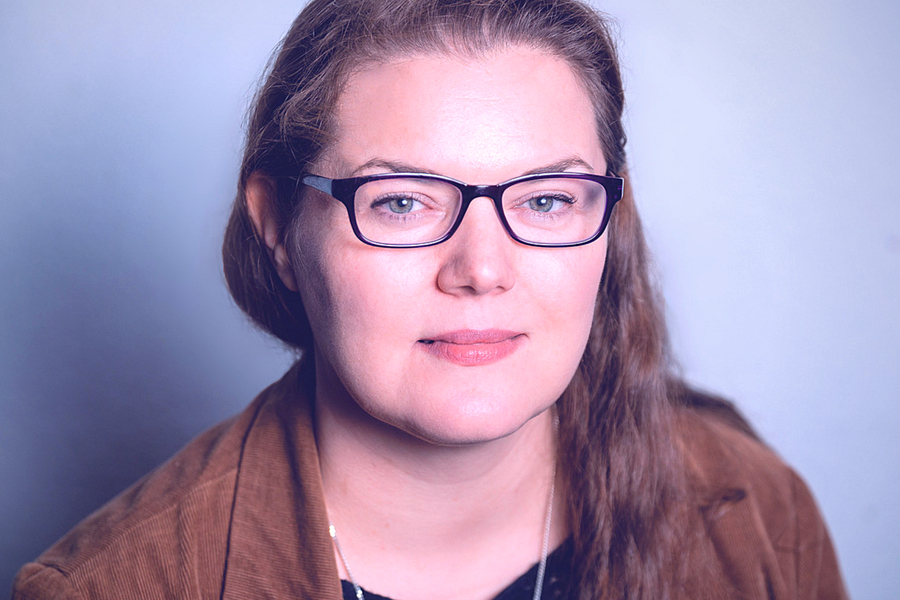By Yolande House
Still questioning your sexuality? Here’s a handy test. Choose A, B, C, all, or none as your answer.
Am I still bisexual if I haven’t “practiced” since university? Or if I never date another woman?
Maybe your mom was right: it was a phase you grew out of by thirty.
Most people assume virgins or celibates are heterosexual. How is this different?
Is sexuality based on someone’s sexual experience or on how they identify?
As the co-coordinator of my university’s Gay, Lesbian, Bisexual, and Transgendered Centre, how would I have answered these questions?
You would have said you don’t care what people do. It’s how someone feels.
Ignore people—straight and gay—who insist you must choose or that your current relationship posits that choice.
It’s not how you appear to others. How do you define yourself? Queer? Questioning? Open to seeing where the night goes?
How have I always defined my bisexuality? Has any of that changed?
You’ve always considered yourself bisexual because in high school you fell in love with your best friend. If you can do it once, you can do it again.
You don’t believe in gender; you’re interested in the person, not the genitalia. As Ani DiFranco sings, “I’ve got no criteria for sex or race/I just want to hear your voice/I just want to see your face.”
You still believe sexuality is a spectrum and most people fall somewhere in the middle.
What kind of bisexual am I?
According to the queer theory article you read years ago, you were a queer-identified bisexual. Most of your friends and your community were queer.
You are most definitely a straight-identified bisexual at this point, meaning most of your cultural context and community is heterosexually oriented.
There should be more than two choices! You grimace and hunch your shoulders.
What if, after twenty-five years, I decided to call myself heterosexual? How would that feel?
- A. Heat rises up your throat as a lid shuts over your lungs and you struggle for thin breaths. You’re suffocating. This box is too small.
- B. Since the rape at twenty-one, you’ve barely dated anyone anyway—male, female, trans, nonbinary. So what if, as a shy female, “opposite sex” attractions are easier to initiate and play out in a rural area? Even when you dated more, you always felt that strange bi invisibility: too tough for straight boys, too feminine to ping girls’ gaydar.
- C. You haven’t thought of yourself as heterosexual since you were sixteen. Those were not your formative dating years. You still forget heteronormative rituals like checking the ring finger of cute guys.
When did I go back in the closet?
- A. You’re trying to remember. It’s all fuzzy.
- B. Your family knows. Most of your friends are bisexual; you always seem to find each other! You were quiet about it at your last job but never tried to hide it. A co-worker once confided, “I’m bisexual, but don’t tell the boss.” You asked why, since another colleague frequently spoke about her female partner and the boss was warm and supportive. “That’s different. She’s a lesbian. People don’t understand bisexuality.” You nodded. That’s why you were quiet.
- C. It was when you moved to South Korea. One foreign teacher told her Korean co-worker she was bi and lost her job a few days later. Even after marching in Ottawa, Toronto, Fredericton, N.B., and Houston, Texas, Seoul Pride felt the most confrontational. A cacophony of techno music from the fenced grounds tried to drown out the traditional Korean hymns blasted by Christian protestors outside. Your gay friend still in Korea says it’s getting better; with more celebrities coming out, the public is coming around. You hope so.
How do I feel when I see bi- or pansexual representation in pop culture?
- A. A loosening. Heat in your throat, releasing as you swallow. Wet eyes dripping relief. You feel seen. Like you can exist.
- B. Janelle Monáe’s video, “The Way I Feel,” always has you clapping and hooting, wiping tears. You immediately add any bisexual songs to your YouTube playlist: Crazy Ex-Girlfriend (musical TV show), “Gettin’ Bi,” The Pipettes, “I Like a Boy in Uniform (School Uniform),” Frank Ocean, “Chanel, Peaches, “I U She,” Ani DiFranco, “In or Out.”
- C. It makes your heart dance whenever Sarah from Legends of Tomorrow, who is usually partnered with women, flirts with a man. She’s bisexual, like me!
How do I identify now?
- A. You’re pretty sure you’re still bisexual.
- B. Even if that label no longer fits, you’re most definitely not straight. You’re a picture frame off-center. (You and your bi roommates attached angled magazine clippings to the walls in undergrad, hooting, “We can’t do anything straight!”)
- C. In university, you found out one of the women on your residence floor was forty-five. You were shocked until you realized she was queer. Then it made sense—she was living outside the bounds of normative time markers and societal expectations. At Toronto Pride you saw an adult you wanted to emulate: alongside her boyfriend after a semester of later-in-life study nights, her leather-clad shoulders pulsed to a heavy bass beat. Her ripped jeans glowed in blinking dots of pink, purple, blue. Bisexual lighting from the glint of a disco ball.
No answer key here. Reflect on your choices. Now, define yourself.
Yolande House’s essays have appeared inThe Rumpus, Grain, Joyland, andPRISM international. Currently, she’s living in Toronto, Canada and completing a childhood memoir.
Reprinted with permission of the author.

